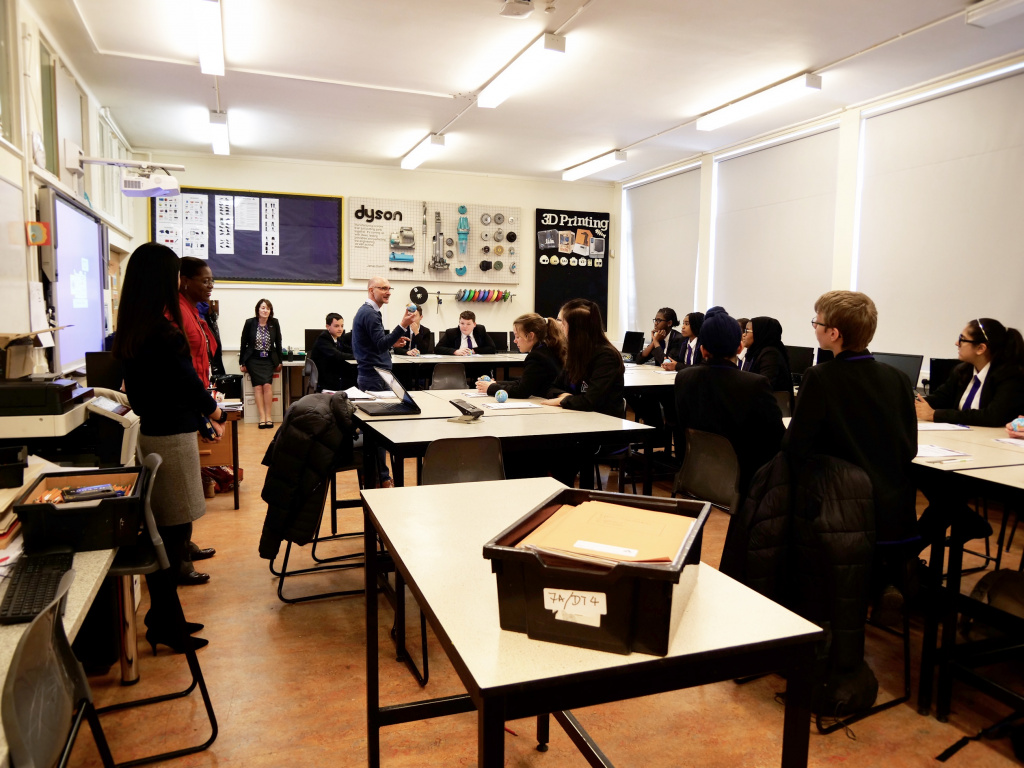
Earlier this year, I was honoured to see Year 9 students from St Mary’s and St John’s Church of England school in Barnet (SMSJ) receive certificates and prizes for a raft of innovative ideas for planet-friendly homes that included solar and hydroelectric power, heat pumps, and waste management. The students had just completed ‘Architecture and Sustainability – looking to the future’, an innovative schools programme designed to engage with future generations in planning the environmentally friendly homes and towns of their own future.
The programme was a joint initiative between award-winning architects Stephen George + Partners and the Heaven Company. The course was uniquely tailored for schools, based on Heaven Company’s ‘Brief Cases’ education initiative. This brings education and the world of work closer together. While the Brief Cases model is already used in universities, the programme at SMSJ marked the first time it had been used in a school setting, reaching out early to engage children on sustainability and the built environment.
The school’s Head of Design and Technology, Philippa Wimberley, said: ‘From the very beginning of our discussions, we were clear that SMSJ wanted to be involved with Stephen George + Partners and Brief Cases. The lesson plans they’ve come up with are extremely well structured and spot-on for how we work, and help our students to excel. We believe that everything is possible and want to nurture and inspire our students, so, as a school and with the support of our senior leadership team, we were comfortable giving the full cohort of Year Seven students exposure to the project. And the students have absolutely loved making and designing their model homes, particularly as they’ve seen television programmes such as Grand Designs; and here they are, as students, designing and building their very own model version.’
The course was delivered over six weeks and revealed some incredible talents among the students, including trailblazing engineering ideas, ingenious designs and new concepts on how waste materials could be used to power homes of the future. Following the success of the initial pilot at SMSJ, we have now also been fortunate to teach the programme to school children in Leeds and Leicester.
As an architectural practice, we understand the crucial role we often play in designing educational and creative spaces for young people, but we felt strongly that we had an important responsibility to further extend our role in the education environment beyond the design and delivery of physical space. It was therefore important for us to develop an education programme that considered the wider career opportunities offered by our business sector, such as project management, engineering and construction. We also recognise that we have an important role to play in shaping ideas and our reasons for developing the education programme stem from a desire to interest young people in how architecture affects the environment and how they can be part of it, caring for the planet through design decisions. The built environment impacts every aspect of our existence—be it the schools you learn in to the houses you live in, the offices you work in or the streets that you walk through. Yet the built-environment sector as a whole (which is designed by architects and practices) is facing two critical issues: addressing the long-term impacts of its unsustainable activities on the planet and a significant skills crisis following years of failure to recruit and inspire young people to join the industry.
The scale of the challenges
As representatives of 200 nations gathered in Poland in November 2018 for the COP24 climate talks, UN scientists warned that we have just 12 years for global warming to be kept to a maximum of 1.5˚C to avert a climate catastrophe. The built environment contributes around 40 per cent of the UK’s total carbon footprint—it is therefore clear that architecture, design and construction must play a crucial role in the prevention of runaway climate change. Architects also have a significant part to play in designing and constructing buildings and infrastructure that can adapt to changing and increasingly extreme climatic conditions, such as flooding and overheating.